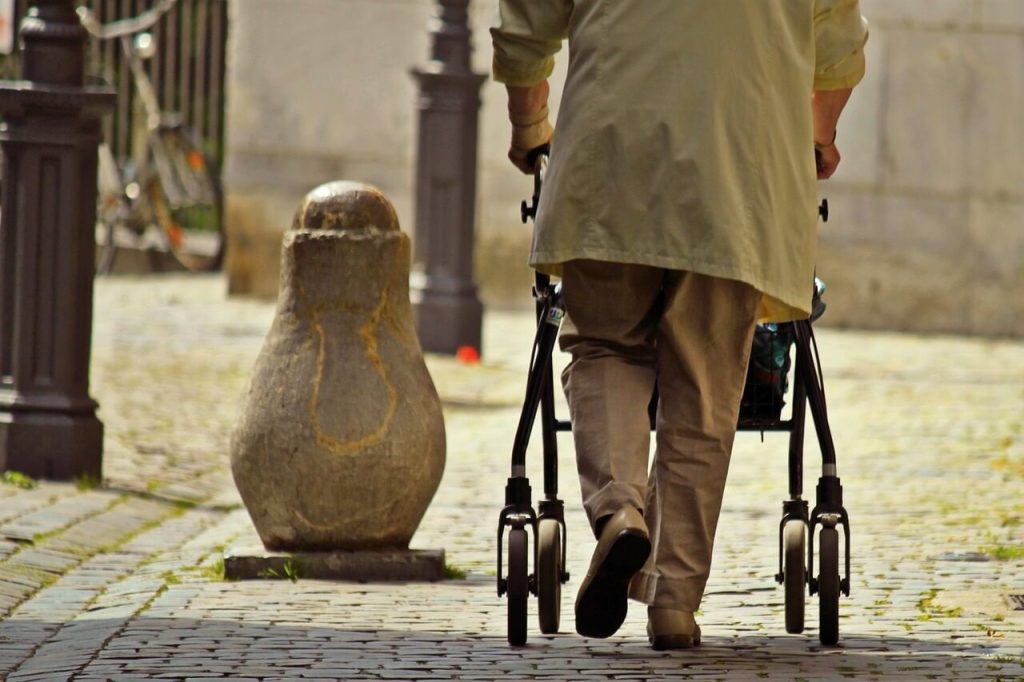As the golden years unfold, maintaining independence becomes a cherished pursuit for seniors. At the heart of this pursuit lies the fundamental aspect of mobility, the key to unlocking a world of possibilities. In this comprehensive guide, we embark on a journey to explore the intricate relationship between seniority and mobility, understanding its profound implications on the overall well-being of our aging population.
The ability to move freely is not merely a physical attribute; it is a gateway to autonomy, a means to engage with life’s offerings on one’s terms. As we delve into the nuances of senior mobility, we unravel the challenges that often accompany the aging process. Yet, it is not a story of limitations but one of empowerment — a narrative that seeks to equip seniors with the knowledge and tools to navigate the path toward enhanced mobility.

This guide is more than a collection of solutions; it’s a testament to the resilience of the human spirit and the capacity for growth and adaptation at any age. Join us as we explore the multifaceted dimensions of senior mobility, discovering how, with the right insights and resources, seniors can not only maintain but elevate their independence, ensuring that their later years are marked by freedom, vitality, and a continued zest for life.
Table of Contents
Understanding Senior Mobility Challenges
Seniors often face challenges related to mobility due to factors such as reduced muscle strength, joint problems, and balance issues. Identifying and understanding these challenges is the first step in finding effective solutions.
As the sands of time reshape the landscape of our lives, they also bring about changes in the physical capabilities of our bodies. Senior citizens often encounter a myriad of challenges related to mobility, stemming from factors that include age-related muscle atrophy, joint stiffness, and a natural decline in balance. These challenges can manifest in a variety of ways, from difficulty in walking unaided to a heightened risk of falls. Understanding these nuanced challenges is the cornerstone of effective solutions. It requires acknowledging that each senior’s experience is unique, and influenced by a combination of genetic predispositions, lifestyle factors, and individual health trajectories.
Moreover, cognitive aspects play a crucial role. Diminished cognitive functions can impact a senior’s ability to navigate their surroundings safely. Memory lapses or spatial awareness issues may contribute to a heightened sense of vulnerability. It’s imperative to approach these challenges with empathy and a holistic understanding, recognizing that solutions extend beyond physical aids to include cognitive and emotional support. By comprehensively grasping the complexities of senior mobility challenges, we lay the groundwork for tailored interventions that address not just the symptoms but the individual experiences of our senior population.
Assessing Individual Mobility Needs
Navigating the intricate terrain of senior mobility involves recognizing the unique and varied requirements of each individual. Personalized assessments emerge as a pivotal compass in this journey. Trained professionals, ranging from physical therapists to occupational therapists, play a crucial role in conducting assessments that consider factors such as muscle strength, joint flexibility, and balance. These assessments extend beyond mere physical evaluations; they delve into the intricacies of a senior’s daily life, taking into account their living environment, social interactions, and personal preferences.
By understanding the distinct mobility needs of each individual, these assessments pave the way for tailored recommendations, ensuring that interventions align with the specific challenges and aspirations of the senior in question. In embracing a holistic approach to assessing mobility needs, we empower seniors with solutions that resonate with their unique circumstances, fostering a sense of agency and enhancing their ability to navigate the world with confidence.
Senior-Friendly Home Modifications
Transforming living spaces into sanctuaries of accessibility is a crucial facet of enhancing senior mobility. Senior-friendly home modifications transcend mere structural changes; they embody a commitment to creating environments that empower rather than impede. Installing grab bars in bathrooms, eliminating tripping hazards, and ensuring well-lit pathways are tangible adjustments that can significantly improve daily life. Additionally, the integration of smart home technologies, such as motion-activated lighting and remote-controlled appliances, adds a layer of convenience.
These modifications are not only about addressing present challenges but also anticipating future needs, fostering an environment where seniors can age in place with dignity and autonomy. By recognizing the home as a dynamic space that can adapt to evolving requirements, senior-friendly modifications contribute not just to physical accessibility but also to the emotional well-being of individuals as they gracefully traverse the journey of aging.
Choosing the Right Mobility Aids
Selecting the appropriate mobility aid is a pivotal decision in the quest for enhanced senior mobility. The journey begins with an understanding of individual needs and preferences. From canes offering balance support to walkers providing stability and wheelchairs ensuring comprehensive assistance, the array of mobility aids is vast. Key considerations include the senior’s level of mobility, the environments they navigate, and the ease with which they can manage the aid.
A careful balance must be struck between providing the necessary support and maintaining independence. Educating seniors and their caregivers on the options available, coupled with guidance from healthcare professionals, facilitates informed decisions. By tailoring the choice of mobility aids to the unique circumstances of each individual, we empower seniors to move confidently through their daily lives while preserving a sense of autonomy and self-determination.
Incorporating Exercise for Improved Mobility
The profound connection between physical activity and enhanced senior mobility underscores the importance of tailored exercise routines. Engaging in senior-friendly exercises, encompassing activities that focus on strength, flexibility, and balance, becomes a cornerstone for maintaining and improving mobility. These exercises need not be strenuous; rather, they are designed to suit individual capabilities and health conditions. Embracing a consistent exercise regimen not only fortifies muscles and joints but also contributes to increased energy levels and a heightened sense of well-being.
Moreover, such exercises foster a proactive approach to aging, empowering seniors to take charge of their physical health and relish a lifestyle marked by vitality, resilience, and the joy of movement. Through the integration of purposeful exercise, seniors can gracefully navigate the challenges of aging, ensuring that each step echoes with a commitment to sustained mobility and an active, fulfilling life.
Transportation Options for Seniors
Maintaining the ability to travel independently is vital for seniors. This section discusses accessible public transportation and senior-friendly ride-sharing services.
Community Resources for Senior Mobility
Local programs and community initiatives play a key role in supporting senior mobility. Readers are encouraged to explore these resources for assistance and support.
Technology Solutions for Senior Mobility
Advancements in technology offer various solutions for senior mobility. This section delves into apps, devices, and telehealth options that promote safe and efficient mobility.
Overcoming Psychological Barriers
Psychological barriers, such as the fear of falling, can hinder mobility. This section addresses these concerns and provides strategies to build confidence and overcome mental obstacles.
Real-Life Success Stories
Inspiration can be drawn from real-life success stories of seniors who have improved their mobility. Testimonials from caregivers and family members further highlight the positive impact of enhanced mobility.
Conclusion
In summary, this guide encourages seniors to take proactive steps toward improving their mobility. By addressing challenges, utilizing resources, and embracing solutions, seniors can enhance their independence and enjoy a more active and fulfilling lifestyle.

Leave a Reply